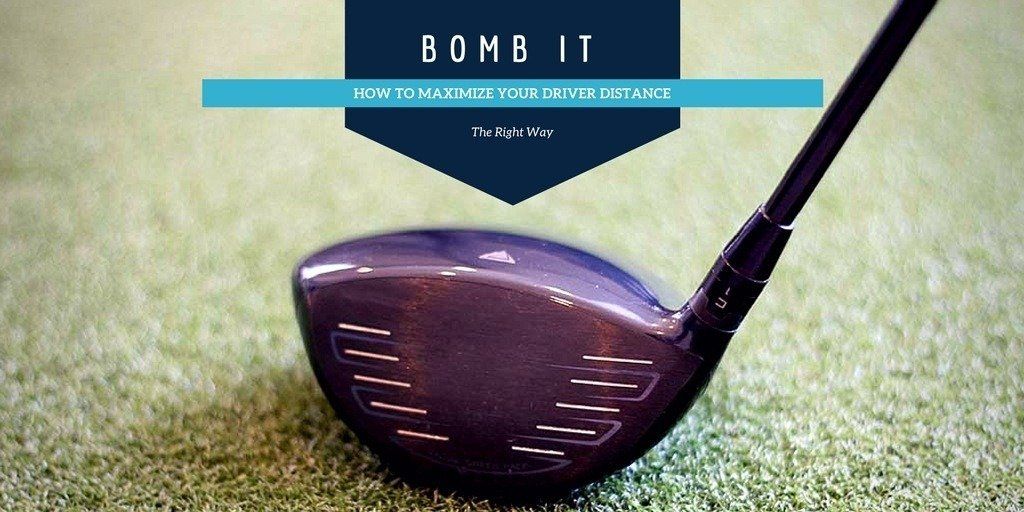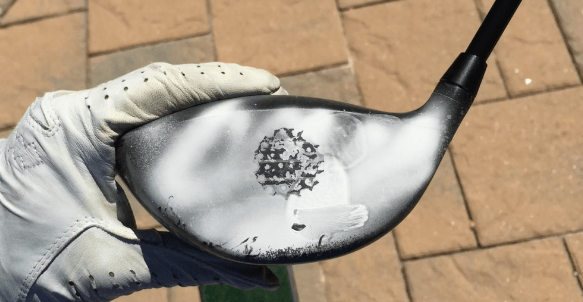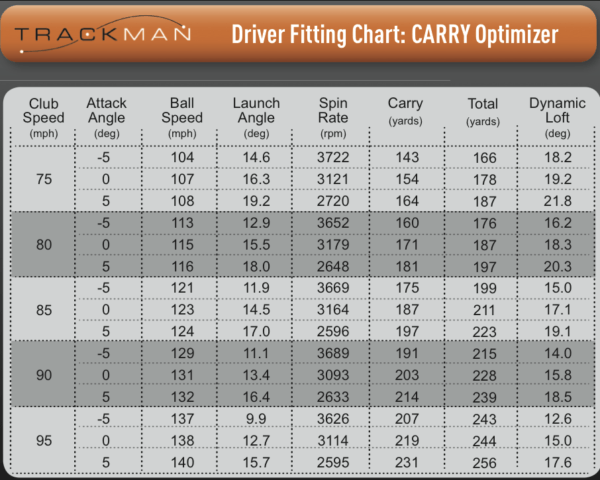
Everyone is currently focused on how far the pros are hitting the ball, and whether or not the golf ball should be rolled back. The truth of the matter is that 99.99% of golfers playing this game are not hitting it too far. In fact, they need plenty of help maximizing distance with their driver.
Over the past several years I've learned a lot about this topic. I've experimented myself and learned from top club fitters and teachers in the industry. There are a number of reasons why recreational golfers are lacking distance with their driver - swing speed, impact tendencies, equipment setup, and several other factors. In this article, I'm going to take you through all of these issues so you are more knowledgeable about what actually creates distance.
A few things to keep in mind:
- You don't have to do everything on this list
- I am doing my best to speak generically; every golfer has their own unique circumstances so not all of this might apply to you
- Many of these concepts will affect one another
Generally speaking, your goal with the driver should be to increase your ball speed, launch it higher, and reduce the amount of spin on the ball. All of these conditions vary depending on the golfer, but these are three general goals most players should be pursuing if they want to maximize their distance with the driver.
Golfers Don't Hit it That Far
I've collected data from a few sources on how far golfers are actually hitting it, but my favorite number to examine is from Game Golf. They have tracked millions of real-life shots on the course over the past several years. These are not puffed up numbers from the range; this is what actually is happening.
Here are the driving distance numbers by scoring average:
100 - 105: 172 Yards
90 - 95: 193 Yards
80 -85: 217 Yards
72 or Better: 251 yards
I'm not sure if these numbers shock you at all, but I think it paints a fairly clear picture. Amateur golfers are not bombing the ball. Additionally, there is no question that if you want to give yourself a better chance of shooting lower scores, increasing your driver distance is an important part of the equation. There are reasonable steps you can take without dramatically changing your swing to get there.
Play the Right Driver
One of the biggest eye openers for me is how much distance can be gained or lost by the combination of shaft and driver head a golfer chooses. Most golfers blindly purchase their drivers off the rack after hearing the marketing claims from the major manufacturers. I believe this is a huge mistake.
Without going into too much detail, my advice to anyone who wants to pick the low hanging fruit of added distance - get custom fit by someone who knows what they are doing.
The combination of the driver head and shaft is crucial.
For example, most golfers assume that getting a lower loft on their driver will increase distance. For many of you that might actually decrease your distance. Every club has unique characteristics, most notably where the center of gravity is. When you throw shaft weight, flex, and profile into the mix you have endless combinations.
I've seen it with my own eyes where I have tried a club that was not right for my swing and immediately lost 20-30 yards because my launch conditions were not optimal. This article will give more insight into why.
Long story short, your current driver might be preventing you from hitting it farther simply because it's not the right club for you. This is one of the easiest things to fix if you work with a knowledgeable clubfitter.
Shorten Your Shaft
Did you know that most stock shafts on drivers now are almost 46" long? Did you also know that many PGA Tour Players have driver shafts that are much shorter than that?
Over the past decade, there has been a shift to give longer shafts to consumers. Golfers want more distance and the manufacturers are happy to give it to them with longer shafts. However, there is a major flaw in this logic.
All things being equal, a longer driver shaft will allow you to swing the club faster, which could add more distance. The problem for recreational golfers and even the pros, is that it makes it more challenging to find the center of the clubface with a longer shaft.
So while you might be swinging it faster, your ball speed (and distance) could decrease because you are striking it all over the face of the club.
Personally, I have switched to a shorter driver shaft. I haven't lost any distance and I've gained plenty of accuracy. Check out this article to find out more about this concept.
For many of you reading this I am confident that if you were able to shorten the shaft of your driver you will actually pick up distance because you'll be striking it closer to the sweet spot of the club. You will also want to work with a club fitter on this.
Improve Your Impact Location
Your ability to strike the ball closer to the center of your driver will greatly affect how far you hit the ball.
By improving your strike efficiency, this is a way to add distance to your drives without adding any swing speed. The first thing you should do is find out where your impact tendencies are.
Get yourself a can of Dr. Scholls Odor X and spray the face of your driver. Take note of where you are striking the ball. Some golfers have a tendency to strike it lower on the face, or more towards the heel or toe.

Due to a concept called gear effect, this will not only affect the shape of your shots but also your launch angle and spin rates.
If you want help improving your impact location, I recommend checking out Adam Young's Strike Plan. It's a great course that provides plenty of drills golfers of any level can perform.
Hit Up On It
Many golfers are missing out on distance because they swing their drivers with a negative angle of attack. You can check out this article to learn more, but the concept is fairly simple.
Golfers that have slower swing speeds need every bit of help they can get to optimize their launch conditions for distance. If your driver head is traveling on a downward trajectory as it approaches the ball, you will launch the ball lower which will rob you of distance. This image helps illustrate what it looks like:

By learning how to hit up on the ball, or have a positive angle of attack, you will be able to launch the ball on the more optimal trajectory.
This data from Trackman easily shows you the differences:

These are swing speeds that most recreational golfers have, and you can see the dramatic distance changes. Players can add as much as 20 yards to their drives by going from hitting down on the ball to hitting up on it.
So how do you do it? For certain golfers, it could be as simple as teeing it up higher and moving the ball further up in your stance.
Here is a great drill to help from Andrew Rice:
Also, if you are interested in measuring your own progress you could get a swing analyzer like Swingbyte or SkyPro to track your angle of attack.
Find The Right Tee Height
One of the easiest ways to help your angle of attack and impact location is to make sure you are teeing the ball at the right height.
Many golfers are not giving themselves a chance to increase their driving distance, simply because they tee the ball too high or too low for their swing. The next time you are on the range, experiment with various tee heights and track your impact location to see if there are any correlations taking place.
Your goal is to make impact in the center of the face, or slightly above it.
Swing Faster (not harder)
All things being equal, adding swing speed is arguably the best way to really hit your driver farther. However, it will require some work on your part.
When most golfers try to add swing speed they are doing it all wrong. They just try to swing harder, which usually ruins their swing mechanics and results in injury. If you want to add swing speed the right way, you need to have a real plan.
Overspeed training is one of the best ways to increase your clubhead speed. There is a product called SuperSpeed Golf that I highly recommend. I wrote this review a while back, and I still believe this is the best method for most players.
Additionally, getting stronger and more fit is another way to add swing speed the right way. Having a golf-specific workout can increase your strength, flexibility, and prevent injuries. We have a workout plan for our Insider Members from one of the top fitness instructors in the golf industry. You can learn more here.
Wrapping It Up
A lot goes into maximizing distance with your driver. As I mentioned earlier, you don't have to do everything in this article to gain more distance because it's likely you are already doing a few things properly.
However, taking one or two of these concepts can easily add significant distance. Hit it far and straight!
We care about the protection of your data Read our Privacy Policy